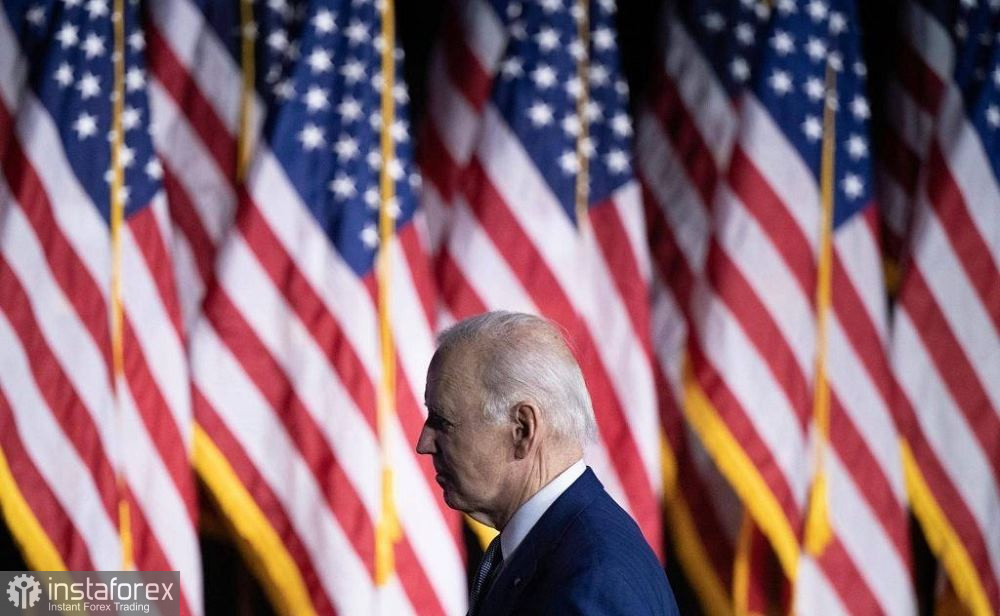The USD/JPY pair is within an upward trend. An upward dynamic has been observed for a week: if on May 11, the USD/JPY pair was at the 133.75 mark, traders are now approaching the 137th figure. The 300-point ascent is due to the strengthening of the U.S. currency, which, in turn, responds to the intensification of risk-averse sentiments.

The focus is on the situation around the U.S. debt ceiling. The "specter of default" continues to scare investors, although negotiations between Democrats and Republicans are still ongoing. The yen is forced to follow the greenback, ignoring its "own" fundamental factors.
Tough negotiations
It's worth noting that the market reacts very sharply to any information regarding the prospects of negotiations to raise the U.S. debt ceiling. For example, on Monday, the dollar weakened its positions across the market amid optimistic statements from Biden about resuming the negotiation process. However, yesterday, the optimistic mood was again replaced by anxiety amid a new statement from the U.S. Treasury Department. Department representatives warned that the Treasury will be able to pay government bills only until June 1 without an increase in the debt limit. Although the actual date when the Treasury exhausts extraordinary measures may be a few days or weeks later (as tax revenues into the budget may be uneven), such alarming reminders have shaken markets. Obviously, with such letters (the first of which was published in early May), the Treasury Department is putting pressure on Republicans in Congress and the White House to reach an agreement. But at the same time, the government is heightening anxiety among traders, reminding them of the seriousness of the situation.
Adding fuel to the fire was other information published today on the White House website. It became known that due to the threat of default, Joe Biden is cancelling some of his trips and will return home early after the G7 summit in Hiroshima. A special statement says that the U.S. President, in particular, has postponed a planned trip to Australia "to ensure that Congress takes action by the established deadline to prevent default." Australia, in turn, has cancelled the QUAD summit, which was called to discuss the fight against China's growing influence in the region.
Against the backdrop of such messages, the U.S. dollar index soared again, updating a 7-week high. The main dollar pairs of the "major group" have changed their configuration accordingly. The USD/JPY pair was no exception: after a small corrective pullback, the price impulsively rose to the resistance level of 137.00 (the upper line of the Bollinger Bands indicator on the daily chart).
As mentioned above, the initial negotiations between Republicans and Democrats reached a deadlock. Representatives of the Republican Party insist on reducing federal spending in exchange for votes in Congress in support of raising the debt ceiling, while representatives of the Democratic Party (and, indeed, Biden) insist on raising the ceiling without any preconditions.
Yesterday, Democratic President Joe Biden and Republican House Speaker Kevin McCarthy held talks, following which McCarthy told journalists that both sides "are still far apart in the agreement." However, he added that theoretically a deal could be reached in the very near future, literally by the end of the week. According to the Republican, reaching an agreement "is not so difficult," apparently hinting that the Republican Party will support raising the debt ceiling as soon as the conditions put forward are met.
The Democrats were not as optimistic about the timeline, though the White House called the talks "productive and straightforward." According to Biden, at the moment, "there is still work to be done."
In fact, the sides once again failed to reach a compromise solution. And although the head of the White House still exudes optimism ("we are on the path to America not defaulting on its debt"), risk-averse sentiments have again increased in the market. The safe haven dollar is again in high demand, including in the pair with the yen.
Ignore-list for the yen
Notably, the USD/JPY pair ignored today's data on the growth of the Japanese economy, even though the release came out in the "green zone." According to published data, GDP growth in the first quarter of 2023 was 0.4% QoQ, with a forecast growth of 0.1% (zero growth was recorded in the fourth quarter of 2022). In annual terms, the Japanese economy grew to 1.6%, with a growth forecast of 0.7%. The GDP deflator jumped to 2.0% YoY, while most experts' forecasts suggested this indicator should have remained unchanged at 1.2%.
Despite such a strong result, the USD/JPY pair continues to move upwards. This suggests that the yen in the pair with the dollar is trading in the wake of the American currency, ignoring "its own" fundamental factors.
Summing up the above, we can conclude that the upward trend will be in effect as long as there is concern in the market about the impending U.S. default. As we can see, the latest round of negotiations ended in failure: the parties merely agreed to "negotiate further." Therefore, at the moment, there are no grounds for a reversal of the trend.
From a technical perspective, the price is testing the resistance level of 137.00, which corresponds to the upper line of the Bollinger Bands indicator on the daily chart. Meanwhile, the Ichimoku indicator has formed a bullish signal, indicating a preference for long positions. If USD/JPY buyers overcome the price barrier of 137.00, the next upward target will be the mark of 137.90, the upper line of the Bollinger Bands on the weekly chart.
 English
English 
 Русский
Русский Bahasa Indonesia
Bahasa Indonesia Bahasa Malay
Bahasa Malay ไทย
ไทย Español
Español Deutsch
Deutsch Български
Български Français
Français Tiếng Việt
Tiếng Việt 中文
中文 বাংলা
বাংলা हिन्दी
हिन्दी Čeština
Čeština Українська
Українська Română
Română

